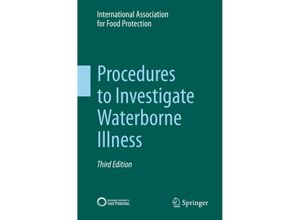Written by a team of international experts this third edition designed to guide public health
personnel or teams in any country that investigates reports of alleged waterborne illnesses.
The manual is based on epidemiologic principles and investigative techniques that have been
found effective in determining causal factors of disease incidence. The guidelines are
presented in the sequence usually followed during investigations and are organized so that an
investigator can easily find the information needed in any phase of an investigation. The book
services as a guide to: - Develop a waterborne disease surveillance and emergency operations
program - Handle illness alerts and water-related complaints that may be related to illness -
Interview ill persons those at risk and controls - Develop a case definition - Transport
water specimens and clinical specimens - Trace sources of contamination - Identify factors
responsible for contamination survival of pathogenic microorganisms or toxic substances and
or propagation of pathogens - Collate and interpret collected data - Report information about
the outbreak This edition has been extensively updated. A section has been added on water not
intended for drinking as a source of illness. The chapter on collection and analysis of data
has been significantly expanded to explain how data is collected and used to suggest possible
vehicles routes and agents. The book is designed to improve the quality of investigation of
outbreaks and disease surveillance. The International Association for Food Protection is a
non-profit association of food safety professionals. Dedicated to the life-long educational
needs of its Members IAFP provides Members with an information network through its two
scientific journals (Food Protection Trends and Journal of Food Protection) its educational
Annual Meeting international meetings and symposia along with international interaction
between food safety professionals.



